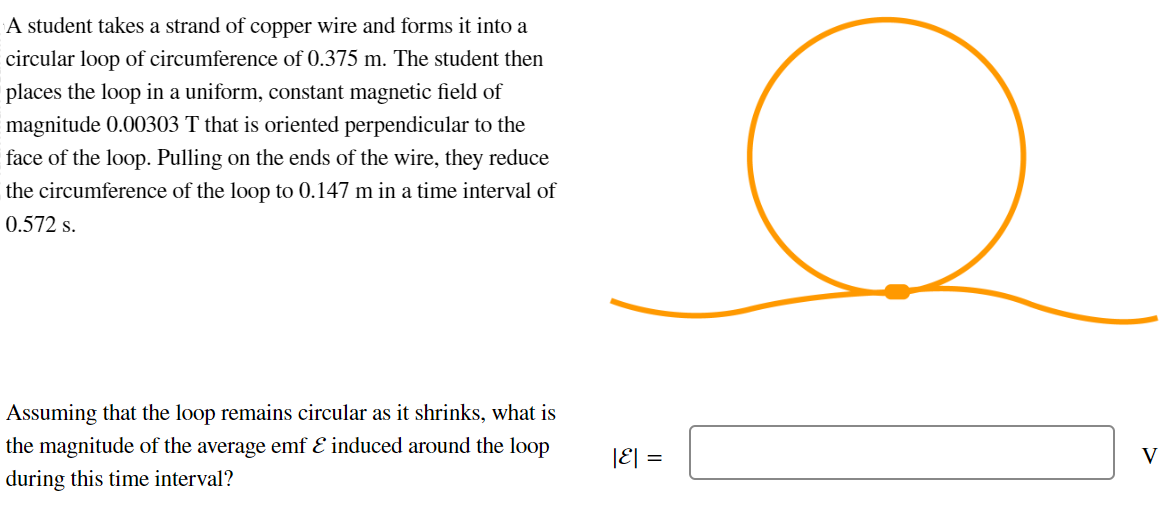A student takes a strand of copper wire and forms it into a circular loop of circumference of 0.375 m. The student then places the loop in a uniform, constant magnetic field of magnitude 0.00303 T that is oriented perpendicular to the face of the loop. Pulling on the ends of the wire, they reduce the circumference of the loop to 0.147 m in a time interval of 0.572 s. Assuming that the loop remains circular as it shrinks, what is the magnitude of the average emf E induced around the loop during this time interval? |E| = V
